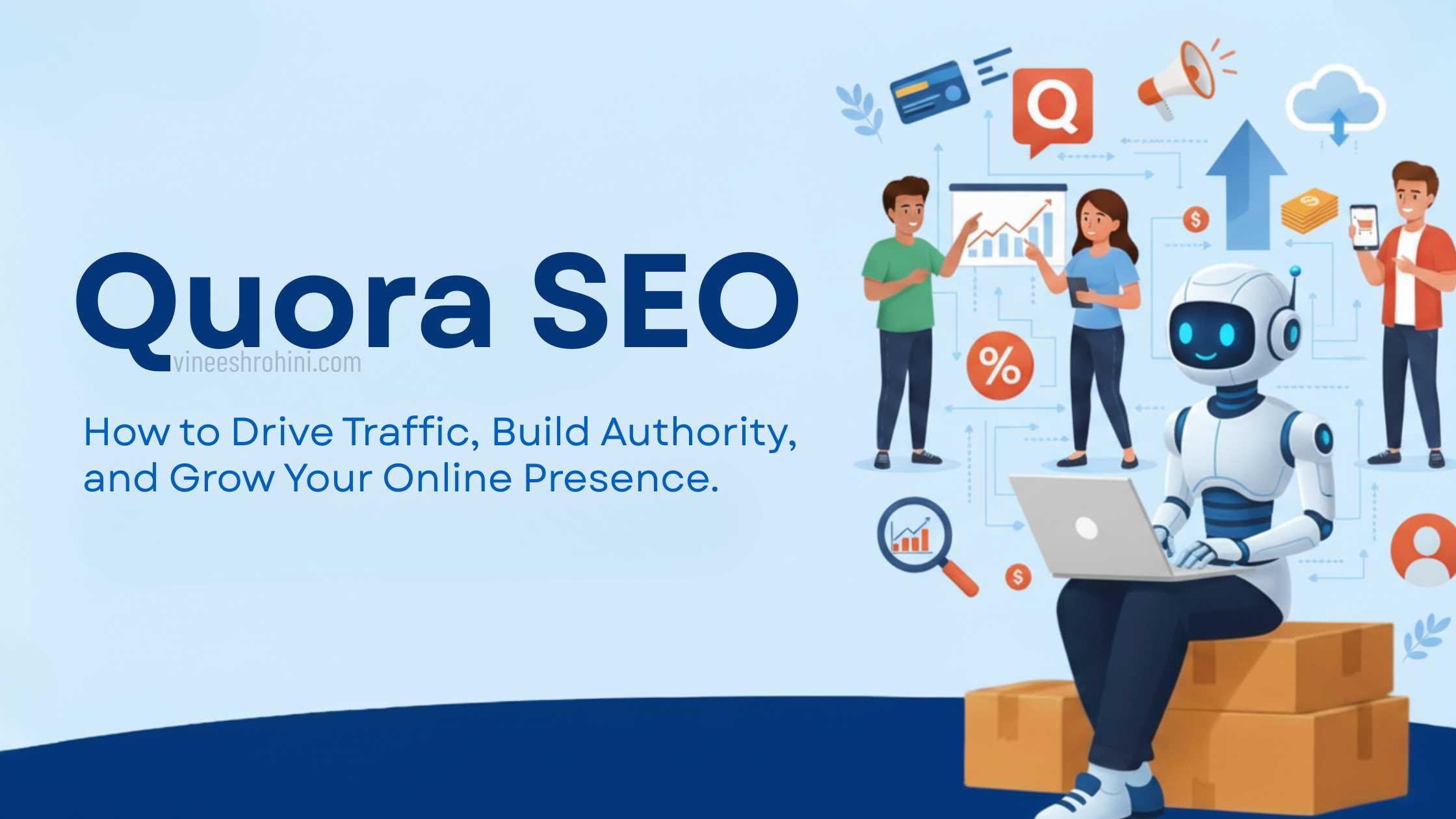Amazon SEO : A Comprehensive Guide 2025
Amazon SEO : Amazon has become the most competitive ecommerce marketplace in the world, with millions of sellers, millions of daily searches, and billions in annual sales. With this massive competition, simply listing your product on Amazon is not enough. If your product does not appear in the top search results, buyers will never see it. This is where Amazon SEO becomes essential.
Table of Contents
Amazon SEO, or Amazon Search Engine Optimization, is the process of optimizing your product listing to improve visibility, attract more traffic, build authority, and increase sales. Amazon’s search engine uses a powerful algorithm known as A10, which prioritizes customer satisfaction, sales performance, relevance, and listing quality. Understanding how this algorithm works and how to optimize for it will help you grow your product rankings and overall revenue.
This comprehensive guide covers everything you need to know about Amazon SEO—what it is, how it works, step-by-step optimization strategies, and how to consistently rank higher in 2025 and beyond.
What Is Amazon SEO and Why Is It Important in 2025?

Amazon SEO is the strategy of optimizing your product listings to appear higher in Amazon search results whenever customers search for relevant keywords. When a user searches for something, Amazon instantly evaluates thousands of similar listings and decides which products to show at the top. These top-ranking products typically get the majority of clicks and sales. Since Amazon is a buying platform, unlike G where people search for information, Amazon focuses heavily on buyer intent and sales performance. In simple terms, Amazon pushes products that are most likely to sell.
Amazon SEO is critical because:
- Higher rankings bring more organic visibility.
- More visibility leads to more clicks and conversions.
- More conversions improve your sales velocity.
- Higher sales velocity boosts ranking even further.
Also Read : Quora SEO – A Comprehensive Guide in 2025
This creates a positive cycle that continuously increases your sales and authority. Without Amazon SEO, your product will remain buried in the lower pages, getting no traffic or sales.
Understanding Amazon’s A10 Algorithm: The Heart of Amazon SEO
Amazon’s A10 algorithm is designed to show the most relevant, highest-performing, and customer-satisfying products. Unlike the earlier A9 algorithm, the latest A10 version gives more importance to organic activity, brand trust, customer experience, and seller authority.
The A10 algorithm evaluates multiple ranking factors:
- Keyword Relevance – Ensuring the listing includes the right search terms.
- Sales Velocity – How fast your product is selling compared to competitors.
- Conversion Rate – How many people who visit your listing actually buy.
- Customer Reviews & Ratings – Reflect customer experience and trust.
- Price Competitiveness – Matching or staying close to market price.
- Brand Strength & Seller Authority – Strong brands and good sellers rank better.
- Fulfillment Method – FBA products often get higher preference due to faster shipping.
- Listing Quality – High-quality images, bullet points, and descriptions.
- Backend Keywords – Hidden keywords for indexation.
- Click-Through Rate (CTR) – Attractive titles and images that drive clicks.
Understanding these elements helps you optimize your product to match Amazon’s ranking expectations.
How to Use Amazon SEO to Improve Your Product Ranking: Step-by-Step Guide

Below is a complete, detailed, and expert-level Amazon SEO strategy.
1. Conduct In-Depth Keyword Research
Keyword research is the foundation of Amazon SEO. Without the right keywords, buyers will never find your listing.
Best keyword research tools for Amazon:
- Helium 10
- Jungle Scout
- AMZScout
- MerchantWords
- Viral Launch
- Amazon Search Term Report
- KeywordTool.io (Amazon category)
Types of keywords to include:
- Primary Keyword – The main term with the highest search volume.
- Secondary Keywords – Related high-volume terms.
- Long-Tail Keywords – Specific phrases such as “non slip yoga mat for beginners.”
- Competitor Keywords – Terms your competition is ranking for.
- Semantic Keywords – Keyword variations that Amazon uses for indexing.
- Backend Keywords – Hidden keywords for additional indexation.
Example for a yoga mat:
- Primary keyword: “Yoga Mat”
- Secondary: “Non-slip yoga mat”, “Eco-friendly yoga mat”
- Long-tail: “Thick yoga mat for home workout”
- Competitor keywords: Terms found using Helium 10 or Jungle Scout
- Backend: Misspellings, synonyms, regional variations
A product that targets the right keywords will rank faster and convert better.
2. Optimize the Product Title for Maximum Ranking and CTR
The product title is the most important part of Amazon SEO. Amazon uses it to determine keyword relevance, and customers use it to decide whether to click.
A high-converting Amazon title includes:
- Brand name
- Primary keyword
- Main benefit
- Size, quantity, or material
- Target audience
- Key differentiating factor
A professional title structure:
Brand + Primary Keyword + Key Features + Material + Target User + Size/Variant
Example:
“XYZ Brand Non-Slip Yoga Mat – 10mm Extra Thick Eco-Friendly Fitness Mat for Home Workout and Yoga Training”
Your title should be clear, keyword-rich, but not stuffed. Proper title optimization can significantly improve organic ranking and CTR.
3. Create Strong, Benefit-Focused Bullet Points
Your bullet points are where Amazon evaluates relevance and customers learn why your product is the best choice. Bullet points should highlight benefits, features, and buying reasons.
Effective bullet points include:
- Feature + Benefit combination
- Keyword variations
- Problem-solution messaging
- Practical uses
- Unique selling points
Example of a bullet point:
“Non-Slip Surface for Maximum Safety: Designed with a textured grip layer that ensures stability during intense workouts, preventing slips and improving balance.”
Use all five bullet points to fully explain your product and incorporate relevant keywords naturally.
4. Write a Compelling, SEO-Optimized Product Description
The product description helps improve both customer engagement and Amazon indexing. A detailed, persuasive description improves conversion rate.
A high-quality description should:
- Tell a story
- Explain how the product works
- Highlight benefits over competitors
- Address buyer pain points
- Use simple, clear language
- Include keyword variations
- Promote brand ethos
Brand-registered sellers should use A+ Content, which allows rich content such as infographics, comparison tables, lifestyle images, and formatted descriptions. A+ Content has been proven to increase conversions by up to 30%.
5. Optimize Backend Keywords for Hidden SEO Power
Backend keywords are hidden but extremely important for your Amazon SEO. They allow you to include terms that don’t fit naturally into the title or bullet points.
Rules for backend keywords:
- Do not repeat keywords
- Include synonyms
- Add misspellings
- Add alternate product names
- Add long-tail phrases
- No commas; separate with spaces
Example backend keyword set:
“workout mat pilates mat fitness mat exercise sheet thick exercise pad gym mat non-slip mat home workout”
Backend keywords help improve your product’s indexation significantly.
6. Use High-Quality Images to Increase CTR and Conversion Rate
Images play a major role in Amazon SEO because they directly affect CTR and conversions. Amazon prefers listings with complete, high-quality images.
Image checklist:
- Main image with pure white background
- Minimum 1500×1500 resolution
- Lifestyle images
- Infographic images
- Feature-focused images
- Comparison charts
- Packaging images
Images help buyers understand the product quickly. Higher conversion rates result in better Amazon ranking.
7. Maintain Competitive Pricing Strategy
Amazon ranks competitively priced products higher. If your product is overpriced, Amazon may push it lower in the search results.
Pricing strategies include:
- Competitor price monitoring
- Dynamic repricing tools
- Seasonal pricing
- Coupon promotions
- Lightning deals
Tools like RepricerExpress or Seller Snap help update prices competitively.
Buy Now : AIOSEO – All in One SEO Plugin For WordPress
8. Increase Sales Velocity: The Ultimate Ranking Factor
Sales velocity is Amazon’s most powerful SEO factor. Products that sell more get higher rankings.
Ways to increase sales velocity:
- Amazon PPC advertising
- Limited-time promotions
- Coupons and vouchers
- Lightning deals
- External traffic (G, social media, influencers)
- Amazon Live promotions
A positive sales spike improves ranking quickly.
9. Get More Reviews and Improve Customer Ratings
Reviews significantly influence ranking, conversion rate, and buyer trust.
Ways to get more reviews:
- Amazon Vine program
- Follow-up message requests
- Offering excellent customer service
- Encouraging feedback
- Avoiding misleading claims
Higher ratings improve your listing authority and visibility.
10. Use Amazon PPC (Pay-Per-Click) to Boost Organic Ranking
Amazon PPC helps increase visibility, traffic, and ultimately sales. These sales help improve your organic rankings.
Types of Amazon PPC ads:
- Sponsored Products
- Sponsored Brands
- Sponsored Display
- Video Ads
Running PPC on main keywords increases keyword indexation and ranking speed.
11. Improve Listing Quality Score Using Amazon’s Tools
Amazon measures the completeness and quality of your listing. Make sure to meet all quality requirements:
- Correct category
- All fields filled
- Full image set
- High keyword relevance
- Clear attributes
- Accurate product details
A complete listing is rewarded with higher rankings and more traffic.
12. Use Brand Analytics for Data-Driven Optimization (Brand Registered Sellers)
Brand analytics provides insights into:
- Search term performance
- Customer behavior
- Market basket analysis
- Competitor positioning
Using this data helps improve your Amazon SEO strategy based on real market trends.
Conclusion: Amazon SEO Is the Key to Long-Term Ecommerce Success

Amazon SEO is not a one-time task—it is a long-term strategy that requires consistent optimization, performance tracking, and customer-focused enhancements. By understanding how the A10 algorithm works and applying the detailed strategies in this guide, you can improve your product ranking, drive more traffic, increase conversions, and build a long-lasting brand presence on Amazon.The marketplace will continue to get more competitive, but with strong Amazon SEO practices, you can position your products ahead of competitors and create predictable, scalable sales growth. Whether you’re an experienced seller or just beginning your Amazon journey, focusing on keyword relevance, listing quality, customer satisfaction, and sales performance will always be the foundation of Amazon SEO success.
Buy Now : AIOSEO – All in One SEO Plugin For WordPress
Disclaimer : This content is for informational purposes only. Amazon’s algorithms and SEO practices may change over time, and results can vary based on product category, competition, and implementation. Always monitor performance and adjust your strategy accordingly



